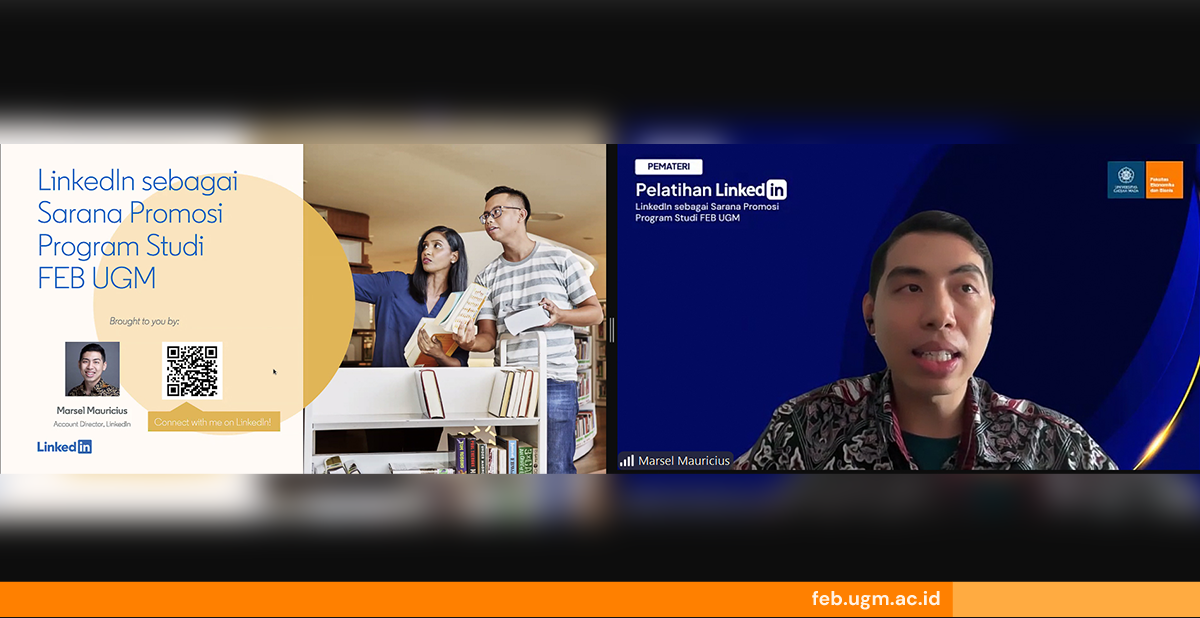
In today’s rapidly evolving digital age, social media has become a key tool in marketing strategies. Originally known as a platform for professional networking and job searching, LinkedIn has evolved into an effective tool for building credibility and increasing brand visibility. Many companies and educational institutions have used LinkedIn to strengthen their branding and conduct industry analysis.
LinkedIn Account Director, Marsel Mauricius, stated that using LinkedIn as a promotional medium can significantly impact academic reputation, increasing enrollment and expanding career opportunities for graduates, including those from FEB UGM.
However, Marsel also highlighted several challenges educational institutions face in promoting themselves. The first challenge comes from within the institutions, such as the inability to adapt curricula to evolving skill needs and job requirements. This gap is mainly due to rapid technological advances, which create a mismatch between the skills taught by institutions and those needed in the workforce. In addition, technical difficulties arise when institutions struggle to understand and anticipate shifts in labor market trends.
During the training session, “LinkedIn as a Promotional Tool for Study Programs at FEB UGM,” held via Zoom on Tuesday (March 25, 2025), Marsel explained that while changing labor market demands, students’ expectations of universities are increasing. Students no longer perceive universities as mere learning institutions but as gateways to their future careers. The mismatch between expectations and challenges often leads to dissatisfaction and a mismatch between graduates’ competencies and available job opportunities. This, in turn, diminishes the attractiveness of academic programs in the eyes of prospective students.
Data from the World Economic Forum supports this reality, stating that one-third of the core skills required for today’s jobs will change within five years.
“This means that many skills they have learned may already be outdated when students graduate. As a result, educational institutions need to be more proactive in understanding emerging skills trends and incorporating them into their curricula,” said Marsel.
He also shared strategies educational institutions can use to enhance their branding through LinkedIn. The first step is to understand current industry needs by aligning the curriculum with labor market demands and increasing visibility through promotional efforts highlighting the institution’s strengths. Institutions can gain industry insights through LinkedIn by analyzing alumni career distribution, in-demand job types, and trending skills in the labor market.
Marsel emphasized that educational institutions should also provide access to various training programs and skill development initiatives beyond classroom learning. Platforms like LinkedIn Learning can serve as valuable resources for students looking to deepen their knowledge or learn new skills in technology, business, and the creative industries. By offering training and certification programs, students can become more competitive in the job market and build a stronger personal brand.
Equally important, universities are critical in helping graduates find appropriate career opportunities. This point combines the previous two by highlighting how universities can support graduates through up-to-date curricula and skills training programs. In addition, institutions should maintain strong alumni networks and increase their visibility to enhance students’ and graduates’ credibility and job prospects.
With the right strategies, educational institutions can build their reputation and visibility on social media and develop a modern educational ecosystem that aligns with the evolving workforce landscape.
Report by: Najwah Ariella Puteri
Editor: Kurnia Ekaptiningrum
Sustainable Development Goals









